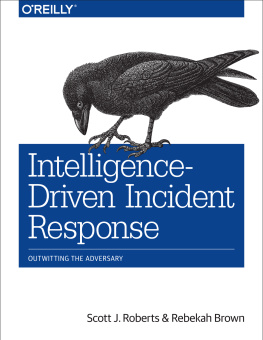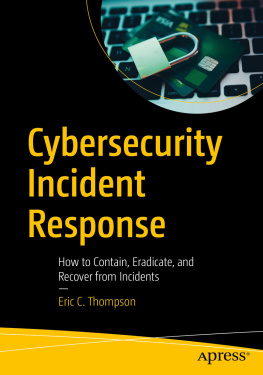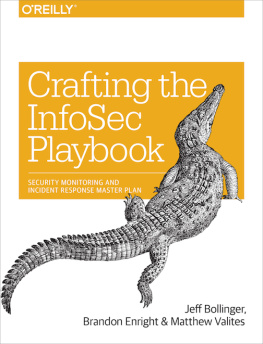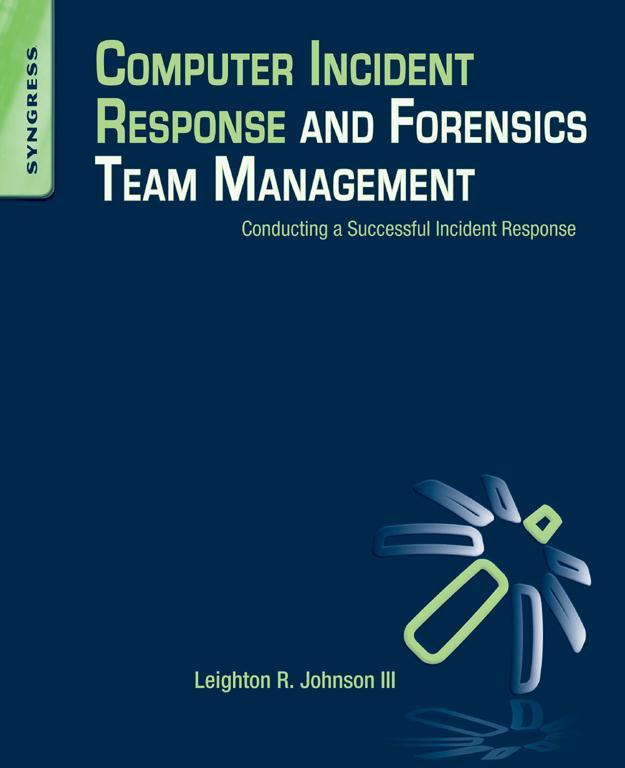Leighton R. Johnson III
Copyright
Acquiring Editor:Chris Katsaropoulos
Editorial Project Manager:Benjamin Rearick
Project Manager:Punithavathy Govindaradjane
Designer:Matthew Limbert
Syngress is an imprint of Elsevier
225 Wyman Street, Waltham, MA 02451, USA
Copyright 2014 Elsevier Inc. All rights reserved.
No part of this publication may be reproduced or transmitted in any form or by any means, electronic or mechanical, including photocopying, recording, or any information storage and retrieval system, without permission in writing from the publisher. Details on how to seek permission, further information about the Publisher's permissions policies and our arrangements with organizations such as the Copyright Clearance Center and the Copyright Licensing Agency, can be found at our website: www.elsevier.com/permissions.
This book and the individual contributions contained in it are protected under copyright by the Publisher (other than as may be noted herein).
Notices
Knowledge and best practice in this field are constantly changing. As new research and experience broaden our understanding, changes in research methods or professional practices, may become necessary. Practitioners and researchers must always rely on their own experience and knowledge in evaluating and using any information or methods described herein. In using such information or methods they should be mindful of their own safety and the safety of others, including parties for whom they have a professional responsibility.
To the fullest extent of the law, neither the Publisher nor the authors, contributors, or editors, assume any liability for any injury and/or damage to persons or property as a matter of products liability, negligence or otherwise, or from any use or operation of any methods, products, instructions, or ideas contained in the material herein.
Library of Congress Cataloging-in-Publication Data
Johnson, Leighton.
Computer incident response and forensics team management: conducting a successful incident response/Leighton Johnson.
pages cm
Includes bibliographical references and index.
ISBN 978-1-59749-996-5 (alk. paper)
1. Computer crimes--Investigation. 2. Evidence, Criminal. 3. Forensic sciences. I. Title.
HV8079.C65J637 2014
658.4'78--dc23
2013035259
British Library Cataloguing-in-Publication Data
A catalogue record for this book is available from the British Library
ISBN: 978-1-59749-996-5
Printed and bound in the United States of America
14 15 16 17 18 10 9 8 7 6 5 4 3 2 1
For information on all Syngress publications, visit our website at store.elsevier.com/Syngress

Dedication
I dedicate this book to RKS who has supported me throughout the writing and editing of this book.
About the Author
Leighton Johnson, the CTO of ISFMT (Information Security Forensics Management Team), a provider of computer security, forensics consulting, and certification training, has presented computer security, cyber security and forensics classes, training and seminars all across the United States and Europe. He has over 35 years of experience in Computer Security, Cyber Security, Forensics and Incident Response, Software Development, and Communications Equipment Operations and Maintenance.
Section 1
Introduction
This section introduces the special needs and requirements for Incident Response and Forensics Teams, their construct and development, the members and staff, and the basic framework for response and forensics teams.
Keywords
Incident response framework
When I started as the corporate Computer Security Manager for a large retail organization 15 years ago, there was no response team, no computer security awareness among the IT staff or senior management, and no driving need to implement any security activities, structures, or requirements for the corporate workers. Everyone from the CEO down thought the computer security situation was someone elses problem and concernthe classic not my problem syndrome.
The first task I embarked on as the Computer Security Manager was to educate the senior executives in the need for corporate computer security and the ability to respond to potential threats to the work environment. It took almost a year, but the corporate leadership did finally accept and fund the development of an incident response capability which was that industrys first team specifically designed to handle and manage incidents which affected the day-to-day operations of the organization and its bottom line.
Security Incident Response and Forensics Response Teams (SIR&FT) are needed more today than ever before during the Computer and Internet Era which has developed over the last 40 years. Today, with most security response organizations and vendors reporting an incredible 30,00070,000 pieces of new malware being introduced each day, the need for responders and investigators is at an all-time high. Every major corporation, all governmental agencies, and most organizations operating on the Internet, using e-mail, or transacting business online require the ability to respond to an unexpected or malicious attack on their networks and infrastructure just to stay in business, let alone perform their daily tasks safely and securely.
All incidents threaten the business or government organization as a whole. The organizations primary business process, all its other processes and reputationthey are all in jeopardy when these incidents strike. Security incident response and management seek to prevent such incidents from happening. And when they inevitably happen, to contain and resolve them, and use the response lessons learned for the next time. Therefore, security incident response and management serve both the primary response process and the organization as a whole.
Since the proliferation of malware is rampant today where the adversary eventually breaches some aspect of a corporations protective measures, along with the high impact of insider threat issues as evidence by recent Corporate, Intelligence and Defense incidents, the primary focus for the SIR&FT is simple but profound:
1. detect compromise as efficiently as possible;
2. respond to incidents as quickly as possible; and
3. investigate using digital forensics as effectively as possible.
The Incident Response team will become one of your most important development activities as the manager in the first days as you start up the management and oversight of the security incident response team (SIRT) and the Forensics investigation team. The team member makeup, the team charter, the corporate executive officer support, the response criteria, all make the SIRT one of the more important team-building activities you will be responsible for at the start.


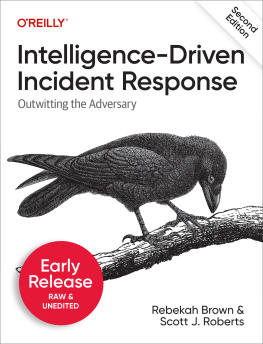
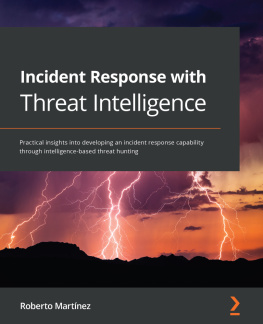
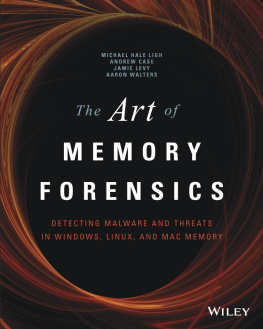

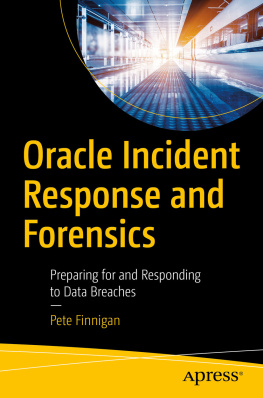
![Bollinger Jeff - Crafting the infosec playbook [security monitoring and incident response master plan]](/uploads/posts/book/193800/thumbs/bollinger-jeff-crafting-the-infosec-playbook.jpg)
